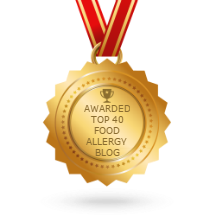
As parents, we’re reliant on our children to express themselves. And as food allergy parents, knowing how they feel is our best barometer for understanding how our kids are handling their food allergies, what’s going on around them vis-a-vis food and friends and what’s on their mind. And, in order to do that, kids must first be able to recognize and identify those emotions.
But how (and when) do we begin?
There’s no such thing as too young to start this conversation. Whether your kids are 2 or 22, getting in touch with how you’re feeling at a given moment can clarify almost any situation, reduce stress and make way for better decision-making.
Here are a few ways to get started:
1. Puts Words to Feelings: Let your children know that their emotions have names. Point out those feelings as you see them. “It looks like doing art makes you feel calm;” “When your brother takes your toys without asking, that makes you angry;” “Wow, you are really excited about going to the zoo today!”
2. I Second that Emotion: My own daughter (now 4) gets upset and will say, “I am feeling so mad right now!” This leads me to a second point: validate their feelings. Praise your children when they express themselves verbally. When my daughter tells me she’s mad I usually respond by saying, “I’m sorry you’re mad about something. BUT, I’m really proud of you for letting me know how you’re feeling.” This lets her know that being mad is okay. And, it encourages her to keep talking to me about her emotions.
3. Read, Discuss, Repeat: Books are great tools for learning and describing emotions as well as helping your child identify the feelings of others. Some great books to start with are:
Today I Feel Silly, by Jamie Lee Curtis
In My Heart: A Book of Feelings, by Jo Witek
The Color Monster: A Pop-Up Book of Feelings, by Anna Llenas
The Way I Feel, by Janan Cain
But you don’t need a special book to talk about emotions. Even when reading a child’s favorite, you can help him/her explore and identify how the characters are feeling. Ask them, “How do you think Madeline felt when she fell from the bridge?” “Is Trixie happy when she realizes she lost her lovey?” “What is Harry thinking and feeling when he’s living at the Dursley’s?” “How would you feel if you were a firefighter headed to a fire?” With older kids, you can even pause a movie or TV show and chat about what a character might be experiencing psychologically.
4. Touch Base: Don’t ignore opportunities to check in with your child about their food allergies. Parents often need to walk a fine line between acknowledging the pain, exclusion and frustration and keeping things *positive*. We are quick to brush aside things that cause our kids pain and sadness and paint it over with positivity and sunshine. But we need to recognize and call out those negative emotions too – because regardless of our rose-colored glasses, our kids are likely experiencing all of the emotions (good and bad) that come along with food allergies.
Recently, when my 12 year old son and I learned that his number one favorite treat, Krispy Kreme doughnuts would no longer be safe for him, we stopped to talk about it. He acknowledged how insanely frustrated he felt and how disappointing this news was. He felt depressed and disheartened – not over a doughnut exactly but rather over another example of food options that more-often-than-not shrink and exclude him. After mockingly shaking our fists in rage and putting a name on everything he was feeling, my son was able to move on emotionally and focus on other special desserts he could look forward to.
You’ll be surprised at how resilient your child is after hearing what emotions they face and what situations arouse those feelings. They encounter food allergy highs and lows all the time. Putting a label on emotions and reinforcing your support will not only give you insight into your child’s world, but it will defuse those negative feelings for your child and help him or her manage these powerful feelings better.
(Thank you in advance! A portion of the proceeds of affiliate links go toward AllergyStrong.org – an organization aimed at helping at risk families with food allergies.)











Hello!
I follow you because my children have food allergies, too. Thank you for all of your heart that is put into this blog and your posts. We had the same reaction to KK, it was our go to for schools treats, allergy shot rewards, etc. We still shake our fists at it, as we pass it often in our city, but then try and remember all of the other goodies we can have. But I agree, let them and us express our feelings, and then try to remember and recount all the things we can have and our blessings. It is hard. It is scary.
Keep up the good work. Thank you!
Meg Blythe
Sent from my iPhone
>
You’ve absolutely made my day! Thank you so much for your note!
[…] Identifying and Recognizing Emotions […]